Top News

Cerner announces its intention to acquire the assets of Siemens’ health information technology business, Siemens Health Services, for $1.3 billion in cash. Cerner Chairman and CEO Neal Patterson told HIStalk that “the broad driver is the post-Meaningful Use era” and the large R&D budgets of both companies. The combined organizations will have 20,000 employees, 18,000 client facilities, and $4.5 billion in annual revenue. Cerner expects the transaction to close in Q1 2015.

Lorre took notes during the announcement call:
- The Siemens customer attrition rate has been improving. Cerner will give them a clear path to a stable future and help get them there. Some percentage of those customers would have ended up with Cerner anyway.
- When asked why the Siemens business is worth acquiring now when it was shopped previously with no takers, Cerner EVP/CFO Marc Naughton implied that Siemens cut the price and was waiting for a strategic buyer that wouldn’t leave its customers hanging.
- Two Cerner executives will join the leadership team of Siemens. Only the client experience and administrative functions will be combined in the short term.
- Siemens has had flat revenue for a couple of years and Cerner will boost that. Siemens has invested a lot of overhead in an unnamed project that didn’t accomplish anything – it will be cut immediately.
- Neal Patterson, asked why this acquisition will work when so many other large ones haven’t, said Siemens knows what it’s doing and can expand, especially in population health management, specifically with regard to interoperability and openness.
- International support will be evaluated country by country.
- Asked why he was suddenly open to an acquisition, Neal said that IT is now ubiquitous and government incentive money is running out. IT will be pressured to meet mandates and provide measures. Cerner will evolve to population health and become a bigger part of the new middle. Cerner is building the most integrated EHR with integrated revenue cycle. Neal said he didn’t have a lot of enthusiasm about the transaction initially, but he went back to the two questions (would it slow Cerner down and can Cerner win over Siemens customers).
- Neal said much of the industry’s healthcare IT talent comes from Cerner, so they have resources to draw from.
- Neal said Siemens is a good asset with great talent at a fair price. They are passionate about innovation.
Reader Comments

From Anon: “Re: Siemens. I read that the company is the largest application hosting vendor in healthcare. Any truth to that? It might add credence to Cerner’s bid.” I wouldn’t be surprised since they’ve been running remote hosting (or is that “offering cloud-based SaaS solutions?”) since the timesharing 1970s. That would provide a guaranteed revenue stream, at least until clients move off those legacy platforms, the pace of which might well be accelerated by the change of ownership.
From Black-Scholes Supermodel: “Re: Cerner acquiring Siemens. If that happens, I will take you to the biggest steak dinner ever at Gibson’s at HIMSS, wear a pink tutu, and dance on the table until I get thrown out.” That’s from a July 23 email to me from a very good equities analyst joking about my running the improbable Cerner-Siemens rumor yet again on HIStalk (going back into May). Now that I have both dinner and entertainment to look forward to at HIMSS, I’ll share the analyst’s logic: (a) Cerner says they don’t need to buy market share because their products are good enough on their own; (b) Cerner integrates everything except a few ancillary plug-ins and doesn’t want more product lines; (c) Cerner already has ample opportunity in the rip-and-replace market, which it estimates at 2,000 customers, so it doesn’t need a fast track into the Siemens legacy business. The analyst concludes that Cerner buying the old SMS means that Cerner’s growth is stagnating and it needed to ignore its long-held principles to feed the beast.

From HIS Junkie: “Re: Cerner acquiring Siemens. Looks like the John G magic could not work. He gave it a good try, but this was a sinking ship for over a decade. Let’s see, Siemens bought it for about $2 billion, gets 1.3 back … that’s only about $100 million per year loss! ..and it’s a great opportunity for Epic. Adds another 500 or so prospective clients to the mix.” Siemens destroyed quite a bit of corporate value, not to mention it paid way too much for SMS in the first place back in 2000, a 73 percent premium over SMS’s share price at the time. The division’s annual revenue today is the same as it was in 2000 and Siemens was anxious to unload the company for just 1x revenue.
From HealthITPundit: “Re: Cerner acquiring Siemens. So Judy Faulkner got Neal to bite! It was her plan all along that if Cerner bit more thank it could handle, Epic would be the last vendor standing. This will be an interesting corporate integration as any in this space. If Cerner is successful, they bought their market share. If they crash and burn, Judy is a genius. All the other verboseness about the win-win-win is a diversion from the truth. It’s all about stopping Siemens clients jumping to Epic. Gosh, I wish I thought of it!” That’s a solid observation. Cerner gains inside access to a large contingent of prospects who are sitting on primitive platforms. Cerner will be whispering “Millennium” in a soft and sexy voice while Epic bangs on the outside door. They won’t all go Cerner and some of the existing recurring revenue they contribute is already built into the $1.3 billion acquisition price, but they should be less-expensive customers to get onto Millennium and some of them are outside the traditional big-hospital demographic of both Cerner and Epic, plus both Cerner and Siemens offer hosting and operational support that is Epic’s weak point.
From Dave Lancaster: “Re: Cerner acquiring Siemens. What impact might this have on smaller systems where both companies have competing products, such as their integration engines (Cerner OPENEngine vs. Siemens OPENLink)? Soarian and Siemens Rx et al. have some form of OPENLink embedded in them as their messaging services applications.”
From Kermit: “Re: Cerner acquiring Siemens. Nice HIStalk shout-out on this story.” That was nice – a few sites get their ideas from HIStalk and virtually none of them admit it, so thanks to Forbes.
From Old Malvernian: “Re: Cerner acquiring Siemens. Who do you think will be laid off beyond those from last month? John Glaser will probably get a big payday, as did Marv when he closed the Siemens deal in 2000. The other top execs will get an easy letdown, as most contracts have a nice acquisition clause. The Germans will be repatriated and employed. Those left hold the flaming bag of poo will be the H1B staff, offshore contractors, and worldwide rank and file. Siemens is the third largest employer in Chester County, PA. I wonder what the revised ranking will be?” Corporate support departments are sure to take a quick and painful hit: HR, marketing, and finance. The technologists and support people should be OK until product decisions are made. Those working in the hosting group should be in great shape. Sales could go either way – the company doesn’t seem to be selling much, so it’s tough to make an argument to spare sales from a shakeup. Every acquiring company says “business as usual” while drawing up long lists of those to be executed.

From Himster: “Re: MModal COO Ronald Scarboro. Word on the street is that he has resigned effective immediately. No official statement from the company.” MModal verifies that Ron has left the company.

From SQSUX: “Re: Sunquest. I’ve heard that more tenured folks are out the door. VP of HR is out and global client relationship manager has resigned.” Verified.
Vince Ciotti told me in late April that he was hearing rumblings about Cerner acquiring the health IT business of Siemens. He apologized for being wrong when it didn’t happen the following week, then emailed later to say he was hearing it again. I thought he might be right, so I saved this piece he sent me a couple of weeks ago so he could get the appropriate recognition when it happened.
Cermens? Siener??
By Vince Ciotti

Now that Siemens has officially announced that their HIT division is up for sale, the rumor about Cerner being a potential buyer becomes more interesting. The potential deal represents a huge shake-up in the HIS industry. Below are a few implications of what this deal could mean to the many parties involved.
Cerner
- ProFit. After the $106M settlement with Trinity Medical Center in North Dakota at the end of last year, Cerner might have started looking for a replacement for its ProFit patient accounting system. When Siemens put its HIT division on the market, Soarian’s revenue cycle system must have seemed like a dream come true. Soarian’s clinicals still face several challenges (e.g. in the EDIS and ambulatory EHR arenas), but the revenue cycle module is relatively complete and working reasonably well, so for Cerner, the billion euro ($1.4B) price tag Siemens is asking might be reasonable in light of potential future litigation.
- Data center. To its credit, Cerner has built two large data centers in Kansas City, many miles apart, which gives them reasonable protection against Midwest tornados. However, students of history might remember the New Madrid earthquake of 1812 that literally shook the whole state of Missouri. There was no Richter scale then, but scientists estimate it was between 7-8 points, and a re-occurrence today would cause unimaginable damage throughout the region. Acquiring Siemens’ super-modern data center in a different seismic zone would give Cerner the best backup protection of any US remote hosting vendor.
- Sales team. Between them, Cerner and Siemens have the two best sales and marketing organizations in the industry. Both firms have grown to over a billion dollars in annual revenue thanks not only to their powerful new sales teams, but equally potent “account executives” who manage clients after the sale and sell new modules and systems, implementation assistance, consulting (totally objective, of course…), outsourcing, etc. These two combined teams would be able to sell screen doors on submarines, let alone HIS systems and services.
- #1 vendor in revenue. We have been tracing the top HIS vendors’ annual revenue for many years for several leading HIS journals, and by our calculations, adding Cerner’s $2.9B in 2013 revenue to Siemens’ ≈$1.4B (what they’re asking for their IT division is probably about equal to its annual revenue) would create a $4.2B giant, a billion dollars larger than current industry leader McKesson. The merger would put Epic in third place, at “only” $1.7B
Siemens Clients
- Soarian clients. One could imagine an interesting face-off between Millennium HNA and Soarian Clinicals at new prospects, but HIS-tory tells us that Cerner will probably stick to its Millennium HNA core system for future hospital sales, building an “integrated” interface to Soarian Revenue Cycle. What the deal means for Soarian clinical clients is an interesting question – Cerner would eventually try to convert them to Millennium, probably as individual contracts (from 10-12 years in duration) come up for renewal.
- Invision and Medseries4 clients. Siemens recently assured the hundreds of clients on these aging HIS systems that Malvern would be supporting them for many more years, but will Kansas City? Again, the contract duration would probably determine how long they offer to support these individual hospitals: long-term contracts with many years to run would be supported the longest, while shorter-term agreement might get pressured to convert off of them earlier, lowering Cerner’s costs to support these legacy systems and increasing Millennium sales.
Competition
- Epic. Should stand to gain enormously in future competitive situations as Siemens’ clients go to market, as Epic’s tidal wave of victories over the past five years continues. This is especially true at IDNs with large physician practices, where Epic still rules with its extremely functional and totally integrated ambulatory EHR and PM systems. Siemens had promised to add an integrated ambulatory EHR and PM system to Soarian, but the slow delivery of this costly R&D project could be one of the main reasons the parent company is selling its HIT division.
- McKesson. The sunset of their large-hospital Horizon system has left them out of most large hospital sales for years and they are only beginning to make headway with Paragon in the mid-sized hospital market of 300-500 beds. The real question is how long it will take them to upscale Paragon to compete with Cerner and Soarian in the high-end market of 500+ beds. I should be fully retired (and maybe even deceased!) before that occurs, so I’ll leave that prediction to other pundits.
- Allscripts. Would now rank in fourth place in terms of annual revenue at ≈$1.4B. Their solid ambulatory EHR and PM systems should sell well under Paul Black’s ex-Cerner leadership. However, the lack of true integration with the Eclipsys-based hospital EHR will be a weakness that the Cerner/Siemens sales reps will hammer upon.
- GE. Oddly, their recent victory over Siemens in the bidding war for the French-based Alstom may have been a contributing factor in Siemens’ decision to sell its US HIT division to deepen its capital reserves. GE’s ambulatory solutions continue to perform well, but they have not made a hospital sale with their ex-IDX Centricity Enterprise system in recent memory, but rather have lost clients to Epic repeatedly. Now if Alstom has an EHR system…
Historical Precedents
Ironically, the only vendor acquisition of this size was when Siemens itself acquired SMS in 2000 for ≈$2B, not a bad profit for Jim and Harvey, who started SMS in 1969 with a $5M loan from savvy Wall Street investors. Prior to that, it was McKesson’s acquisition of HBOC in 1998 for a $14B stock swap that had topped the charts, although the subsequent financial scandal caused that stock value to drop precipitously. Aside from these two mega-deals, other large acquisitions that put the Siemens bid in perspective include include:
- Allscripts buying Eclipsys for $1.35B
- NTT Data acquiring Keane for $1.2B
- GE gobbling up IDX for $1.2B
However, these other deals didn’t involve one HIS vendor buying another, each with a competing array of HIS products and services. That’s what makes the potential of Cerner acquiring Siemens’ HIT division an unprecedented industry shake-up, in that it will impact over 1,000 hospitals with these two vendors’ complex array of systems installed. Should make some interesting reading on HIStalk for many years to come!
Acquisitions, Funding, Business, and Stock

Premier, Inc. will acquire clinical surveillance software vendor TheraDoc from Hospira for $117 million in cash. TheraDoc has 1,000 facility customers. The price reflects around 10 times the company’s operating earnings, according to the announcement. Hospital acquired TheraDoc in 2009 for $63 million. Premier’s SafetyAdvisor is similar in analyzing data for hospital-acquired infection and for antimicrobial stewardship programs.

MModal exits Chapter 11 bankruptcy following financial restructuring and debt reduction of 55 percent.

Imprivata announces Q2 results: revenue up 34 percent, adjusted EPS –$0.81 vs. $0.01, falling short on earnings expectations.

The slide continues for the wildly hyped Castlight Health, with shares closing down another 4 percent Monday to $11.70 vs. March’s IPO day close of around $40. That’s a stunning 70 percent drop in less than five months. Above, it’s (obviously) CSLT in blue and the Dow Jones Industrial Average in red. Even at the fire sale price, the company is frothily valued at $1 billion, or 36 times revenue. The company announced last week that two of its directors have quit and the COO is leaving at the end of September, coinciding with its Q2 report that listed a $22 million quarterly loss.

McKesson shares closed Monday at an all-time high. You would have made 10 times your investment had you bought shares in the post-HBOC disaster days of 2000.
Sales
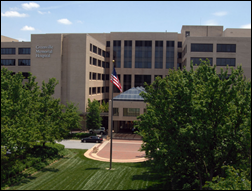
Providence Health & Services (WA) and Greenville Health System (SC – above) choose Infor Healthcare, which includes supply chain management and execution.
The Navy Medicine Operational Training Center (FL) selects AtHoc for mass notification and command-wide communications.
People

PatientSafe Solutions names Peter Longo (Health Gorilla) SVP/chief revenue officer.

Jason Jobes, associate director of revenue cycle solutions at The Advisory Board Company, is named to the Board of Examiners for the 2014 Malcolm Baldrige National Quality Award, which is managed by NIST.

Genome informatics vendor DNAnexus names David Shaywitz, MD, PhD (Theravance) as chief medical officer.

David Levin, MD (Cleveland Clinic) joins Nordic as chief medical officer.
Announcements and Implementations
DataMotion launches Direct Community Web Portal, which allows hospitals to meet Meaningful Use Stage 2 transition of care objectives by securely transferring PHI from one care setting to another. Affiliated providers aren’t required to use Direct or to run a certified EHR – the portal include a CCD viewer.
American Heart Association launches an Open Innovation Challenge for Midwestern startups with ideas about how to help people prevent or manage cardiovascular disease or stroke. The 10 best ideas move on to a crowdfunding competition and the top three then pitch to judges and investors in Chicago in November. The winner gets a $20,000 grant and whatever crowdfunding money they raise. Applications are due on September 12.
EHNAC releases new criteria for its HIE Accreditation Program that include the Texas program. EHNAC is a non-profit organization that accredits HIEs on their use of standards to achieve quality and trust.

California Integrated Data Exchange, funded by $80 million from Blue Shield of California and Anthem Blue Cross, announces plans to develop the Cal Index statewide HIE. Cal Index says it will go live in late 2014 with 9 million records online. The initial funding covers the first three years of operating expenses, after which the HIE plans to sell subscriptions. Note the business model: insurance companies are paying, which makes sense since they get access to data and their costs should go down with better care coordination. Finally there’s a business case for running an HIE.
IMedicor launches a cloud-based dental EHR.
Mississippi Medicaid launches a clinical data repository, provider portal, and MPI using technology from MedeAnalytics.
Government and Politics

Vermont ends its relationship with CGI and gives Optum a no-bid contract to take over Vermont Health Connect, saying CGI repeatedly missed deadlines and the site still isn’t fully functional. The state says the cost of the insurance exchange will probably exceed the $83 million CGI was to be paid, of which Vermont has already written checks for $57 million (97 percent of which comes from federal taxpayers). The state’s chief of health reform said in response to questions about hiring Optum without bidding out the work, “The state RFP process takes forever … we are undoubtedly going to get hammered. I don’t care.”
The Affordable Care Act is boosting the bottom lines of both for-profit and non-profit hospitals as newly insured patients use more orthopedic, oncology, and maternity services. Insurance companies are spending more than they expected, with Cigna’s CEO saying that health insurance exchanges aren’t sustainable unless more people, especially healthier ones, sign up through them.

CMS temporarily suspends use of its Open Payments system that shows payments made to doctors by drug and medical device companies. CMS found that a batch of payment records from an unnamed company had assigned payments to the wrong doctor by including an incorrect state medical license number. The system isn’t live yet, although doctors are able to verify their information.

An HHS OIG review finds that ONC’s former temporary certification program (ATCBs) didn’t ensure that certified EHRs were retested, didn’t include a training program to ensure that testers were qualified, and didn’t look hard enough at security-related issues such as password complexity and user privilege changes. ONC replied that ATCBs are extinct and full certification now features improved security and privacy features, to which OIG commented, “We do not agree that the 2014 Edition EHR Certification Criteria sufficiently address our security concerns regarding the Temporary Program.”

Habersham Medical Center (GA) is struggling financially after voting in September 2013 to pay back $1.5 million in HITECH EHR incentive money it found it hadn’t qualified for and for borrowing $37 million for expansion and facility improvements. The CEO found that the 53-bed hospital had attested for the first incentive payment without having the necessary software despite having spent $3 million upgrades, leading to his dismissal of the IT director and sending CMS its money back.
Innovation and Research
Accenture and Philips develop proof-of-concept software that allows people with ALS and other nerve diseases to control Philips products using their brainwaves, along with existing capabilities to use voice and eye commands.

More promise of using technology in cancer treatment: a startup that develops oncology drugs by artificial intelligence and big data gets its first drug into human trials.
Other

The AMA tweeted the above graphic that references a magazine’s survey. The survey’s methodology wasn’t stated, which would have been nice since some of the percentages involve subsets of other questions and the devil is in the details. It also wasn’t stated if the survey involved self-selected online respondents, the validity of which is nearly zero.
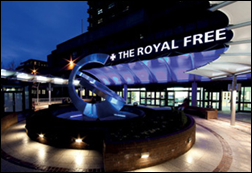
In England, The Royal Free Hospital uses OpenText’s content management product to import paper-based progress notes and link them to Cerner Millennium.

A crematorium in England installs a Digital Autopsy center run by software company iGene London. It uses a multi-slice CT scanner to create a 3D image that a pathologist can examine on a tablet.
A Russia-based crime ring is found to have stolen 1.2 billion Internet username/password combinations and 500 million email addresses using botnets.
Local governments in China say GE Healthcare’s telemedicine projects are floundering because their equipment is too expensive at over $300,000 per installation, adding that GEHC tried to sell less-expensive equipment to take market share away from Siemens but ended up competing with its own distributors.

Weird News Andy performs a literature review of robot nurses. Around 150 “welfare facilities for the elderly” in Japan are using Palro robots that remember names, faces, and previous conversations. Gizmodo profiles the RIBA-II robot nurse. Pittsburgh-based robotics firm RE2 releases a new line of robots that can mimic human movement to perform repetitive processes and lift heavy objects. The upcoming Disney movie “Big Hero 6” features an engineer who transforms a robotic nurse into a fighting machine with pop-out wings and a projectile fist (which could be useful for robotic nurses assigned to urban EDs.)
Sponsor Updates
- Beacon Partners will exhibit at the Siemens Innovation Conference August 10-13 in Tampa, FL.
- A blog post by Brad Levin of Visage Imaging addresses how radiology can improve productivity and quality.
- Health Catalyst CMO Bryan Oshiro shares his wake-up call that solid data can save lives.
- Greenway extends special pricing for Engage14 in Dallas September 4-7.
- Greenway suggests how to select the clinical quality measures for a primary care practice.
- ICSA Labs certified HIStalk sponsors Medfusion and Wellsoft in July.
- HealthTronics posts its event schedule through the end of the year.
- InstaMed launches its bi-coastal billion transaction infrastructure.
- Premier Medical PC (AL) selects McKesson Business Performance Services.
- Craneware and Shriners Hospitals for Children are co-presenting this week at AHRMM14 on automation of supply and pharmacy management processes.
- Allscripts announces speaker information and agenda for ACE 2014 in Chicago August 12-15.
- Valence Health is moving into larger office space in Chicago with plans to hire an additional 500 employees by 2019.
Contacts
Mr. H, Lorre, Jennifer, Dr. Jayne, Dr. Gregg, Lt. Dan, Dr. Travis.
More news: HIStalk Practice, HIStalk Connect.
Get HIStalk updates.
Contact us online.
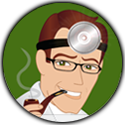


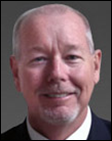

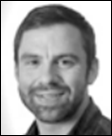
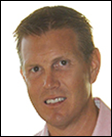





























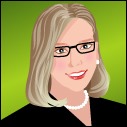















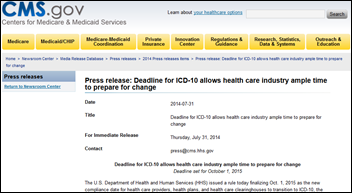









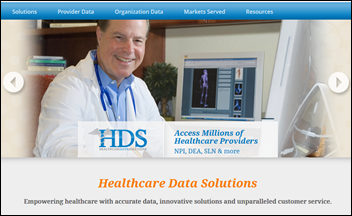
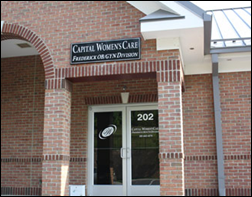















"most people just go to Epic" that's a problem because then EPIC becomes a monopoly in healthcare, if it isn't…